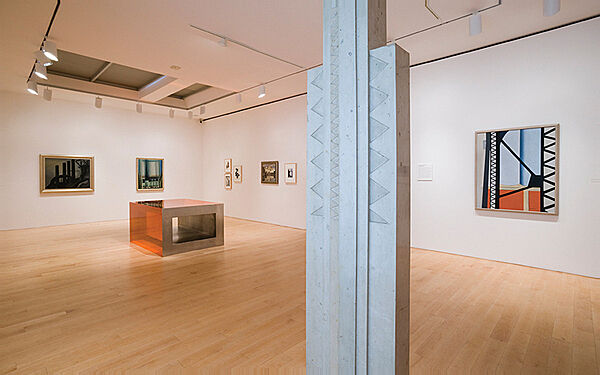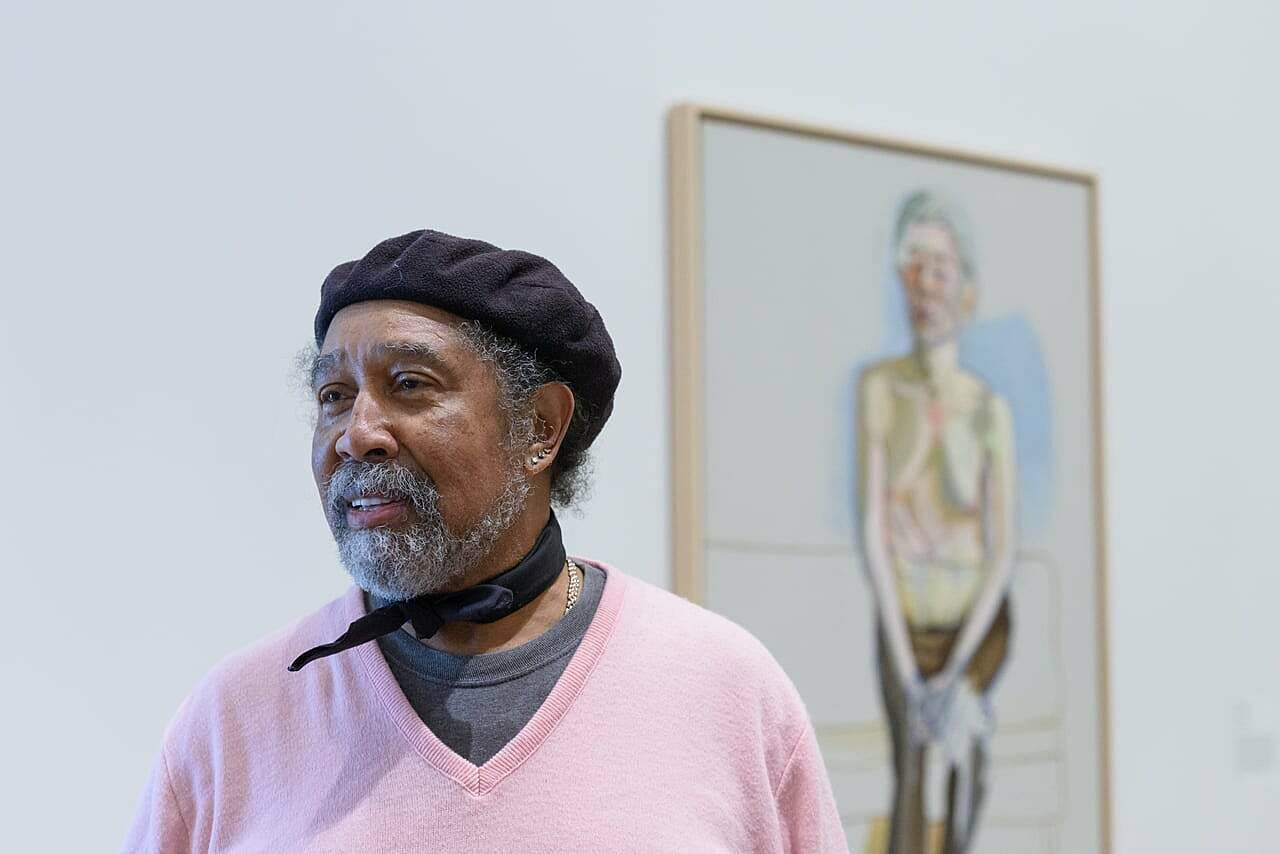Alice Neel
1900–1984
Over the course of a career that stretched from the 1920s to the 1980s, Alice Neel painted hundreds of friends, family members, lovers, artists, art historians, writers, and political activists, believing that “people are the greatest and profoundest key to an era.” Seeking to express psychology above absolute physical likeness, she often used exaggerated colors and expressive brushstrokes and eliminated extraneous details in order to capture the inner lives of her subjects.
Neel was a longtime supporter of leftist causes. In the painting Pat Whalen, she depicts the Communist activist and union organizer for the longshoreman of Baltimore as a paragon of social justice. Whalen’s creased face and stern expression—along with the copy of the Daily Worker, the official newspaper of the Communist Party USA, resting beneath his large, clenched fists—suggest both a noble archetype of the blue collar worker and an all-consuming commitment to the working man’s cause.
Neel’s portrait of Andy Warhol, created more than three decades later, engages an altogether different quarter of American culture. At the time, Warhol was making silkscreen paintings of celebrities and nightlife personalities that in many ways represented the polar opposite of Neel’s approach to portraiture. Two years before he sat for Neel, Warhol had been shot by radical feminist Valerie Solanas; here his bare torso is marked by surgical scars that extend from either side of his drooping chest before disappearing beneath the corset he wore after the shooting to support his abdominal muscles. Neel isolates him on a sketchily drawn bench surrounded by empty canvas. By removing the throngs of followers, dark sunglasses, fright wig, and turtlenecks behind which Warhol usually hid, Neel exposes a profoundly vulnerable side of the celebrity artist.
Dana Miller and Adam D. Weinberg, Handbook of the Collection (New York: Whitney Museum of American Art, 2015), 277–278.
Country of birth
United States
Roles
Artist, painter, photographer, sculptor
ULAN identifier
500022216
Names
Alice Neel, Alice Hartley Neel
Information from the Getty Research Institute's Union List of Artist Names ® (ULAN), made available under the ODC Attribution License. Accessed December 20, 2025.










